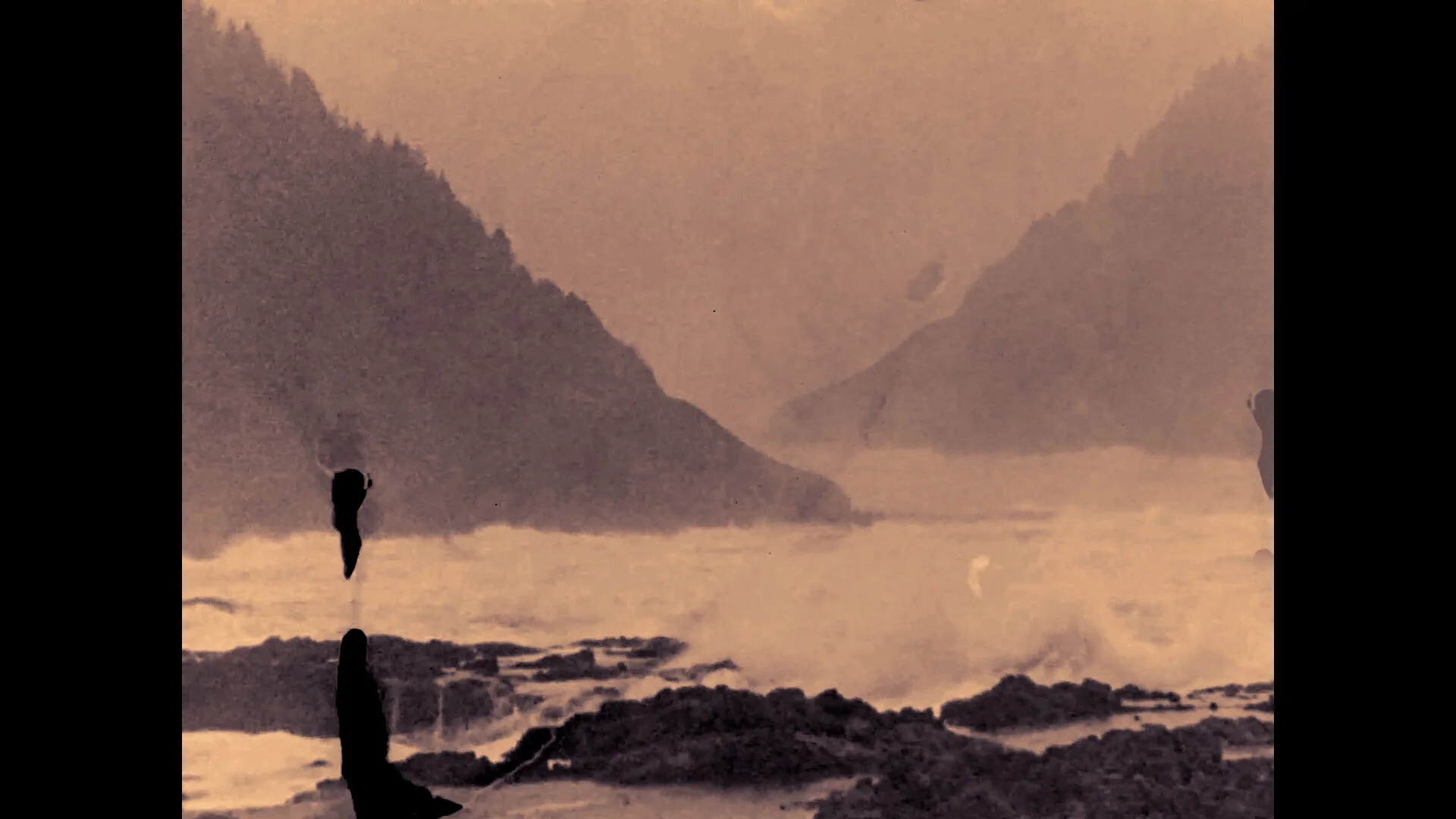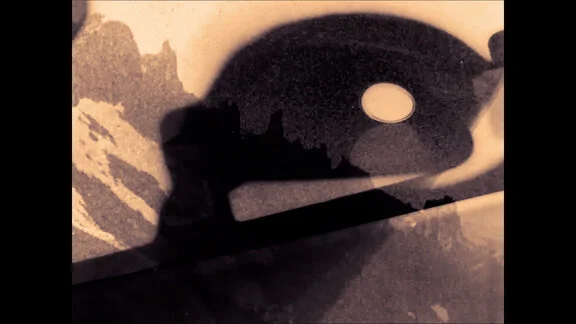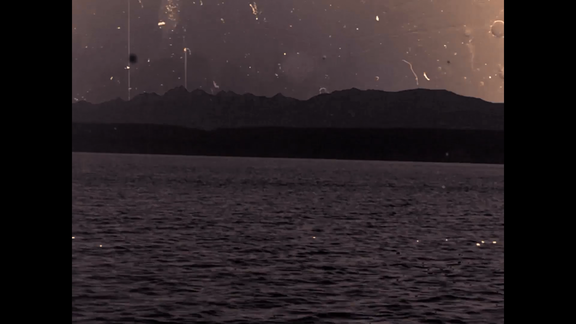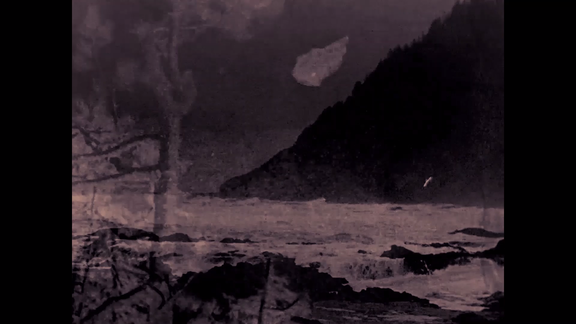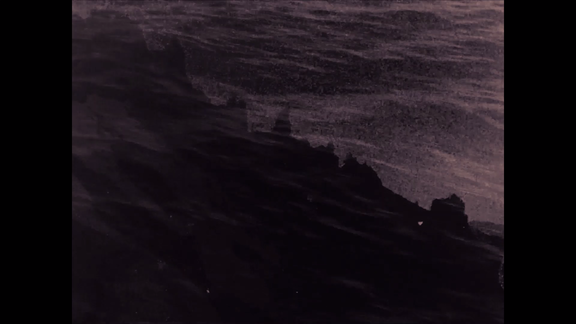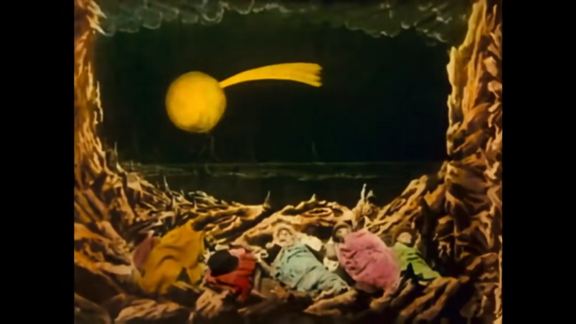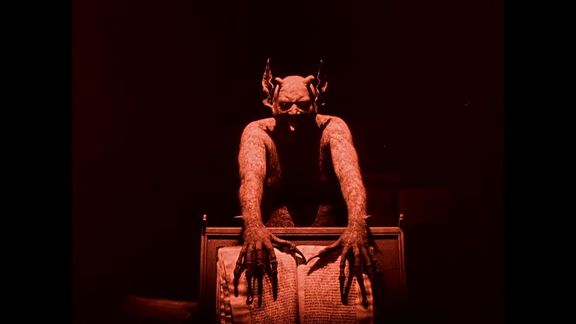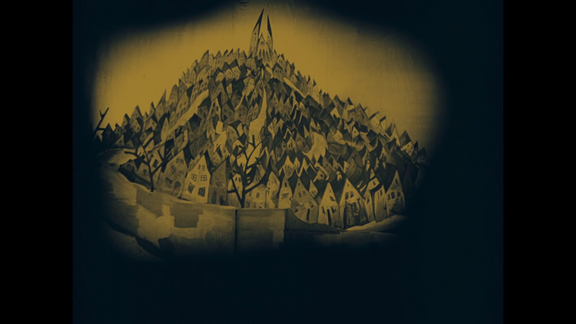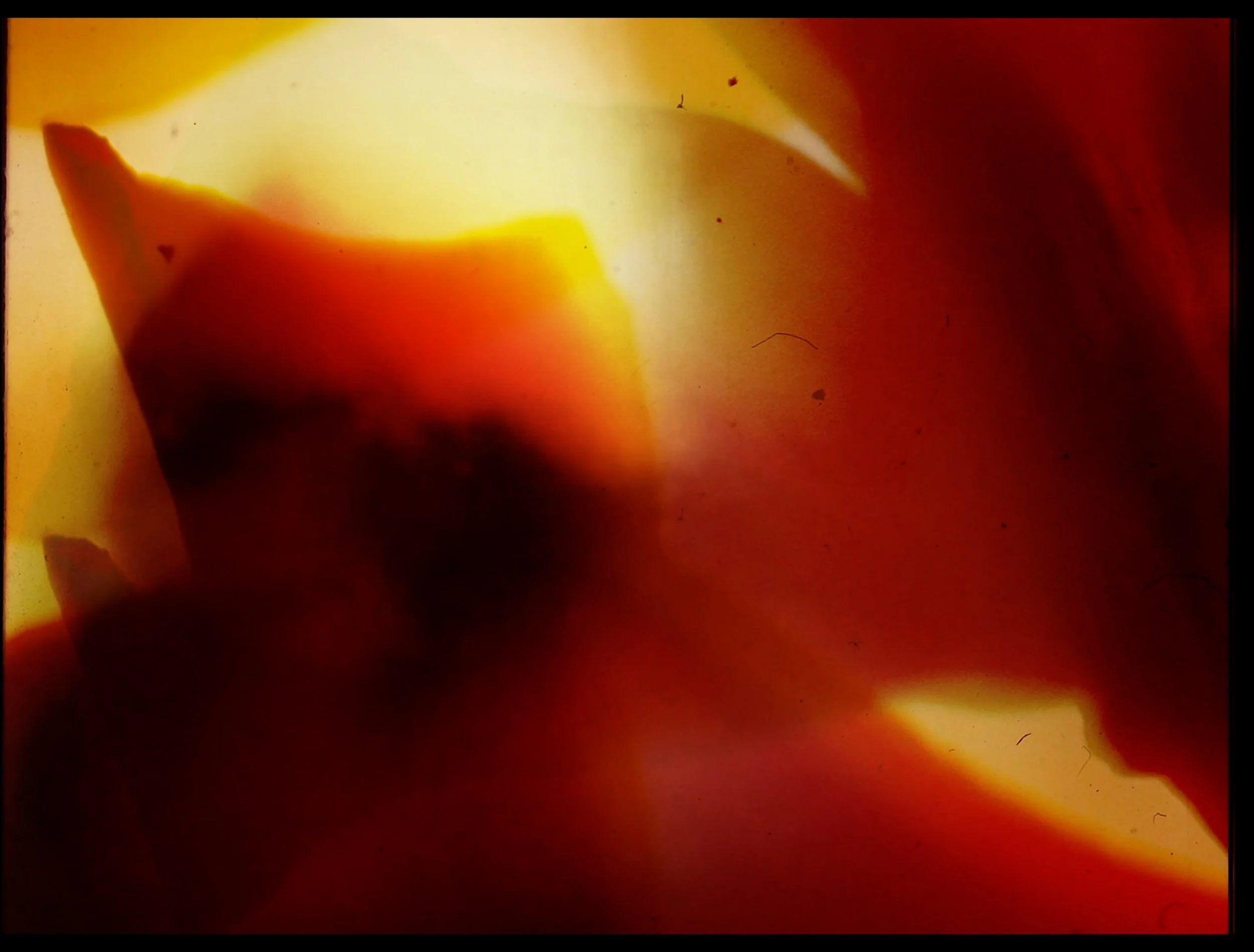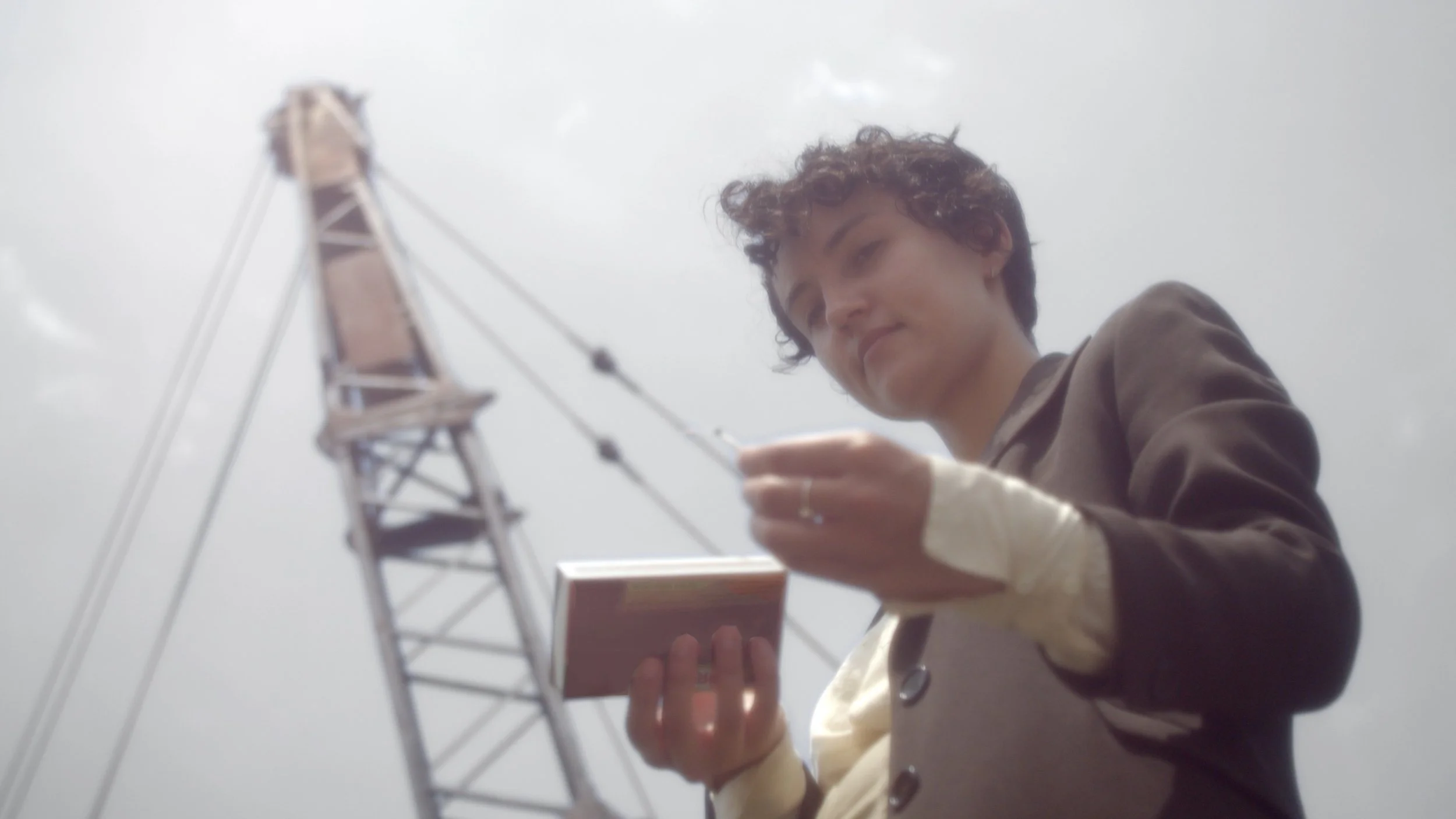Imagine none of this is real
Directed by NICOLE BAKER PETERSON
United States of America & Canada, 2020
Experimental
A strange, melancholic travelogue through the post-human world. A record of light, land & the resonance of its experience.
Read our interview with Nicole below to learn more about the film.
NICOLE BAKER PETERSON
Est. Reading Time: 7 Minutes
MARK (M) Tell us a little about yourself - when did you become interested in film and filmmaking?
NICOLE (N) It’s something of a long and meandering story, but the gist is this: When I was going off to college I wanted to study architecture. However, I wasn’t able to because my parents wanted me to only go to school for four years and the architecture program was five. They wouldn’t co-sign the loans for architecture. So, I was going to settle for interior design or historic preservation or something like that, but when I was looking at the school course catalogue I kept flipping to the Film and Television section and circled all the classes I was excited to take for my electives. I wasn’t interested in much of anything in the other disciplines. During orientation, I remember listening to the teachers really emphasize what it means to have student loans, and I figured if I was going into so much debt, it should be for something I really cared about - I switched majors and joined the film program pretty quickly after that.
My first couple years of film school I really wanted to go into comedy. I realised comedy is hard, so so hard and you have to really care about what other people think is funny and honestly what other people think in general. And I just didn’t. I made these weird, surreal little ‘comedy’ shorts that only I found funny. And then I discovered Kenneth Anger. And silent film! And video installation!
M Why are you interested in exploring the connection between the subject and the specific media being used to capture it? Why do you think it’s important to explore this relationship within your films?
N I think a lot about media literacy in my work and life. And this informs the way I interact with the material of media. Obviously, I approach it more from a philosophical place in my filmmaking and artwork than in other spaces. It honestly comes from a sort of defensiveness, as someone who deeply loves motion picture images. Interacting in contemporary art spaces, entertainment mediums get a lot of shit. I remember reading ‘Society of the Spectacle’ and just being so annoyed at this pretty outdated view of the way our relationship with motion picture media was characterized, like movies are some great beasts and we are their passive victims.
On Locations
M As mentioned in the synopsis, the film is a travelogue so I’m curious to know more about the locations. What made you choose these locations - what was it about a certain place that inspired you to film and include it within your movie? And how deliberate were you in choosing to showcase these specific places in the world?
N I was initially looking for otherworldly landscapes and areas that were ‘sublime’ in the sense of being overwhelmingly beautiful, almost violently beautiful. The kind of spaces that are the classic definition of ‘awesome’. These are all places that are untamable, and in most cases dangerous. When it came to these specific spots, some were chosen in pre-production, some ended up being spontaneous, and in some cases I ended up using footage from shoots that were just supposed to be tests. The shooting process was consciously very removed from the editing process. Like the act of traveling, shooting and then processing the film was its own creative act. Taking the material generated from that and creating the film was situated in my mind as a separate act. Something along the lines of how one might approach a found footage project.
On Interpretation
M I know you may not want to delve into this too deeply but can you touch on a few of the film’s themes? When I watch the film, I sense conflict between longing for the natural world and environmental degradation.
N You have absolutely identified some of the central themes, and I would even take it further and say it could be specifically the conflict between an existential panic about the environmental situation we find ourselves in and the lack of any reasonable response to it, coupled with a desire to see and experience a post-human world. Though it’s also about seeing these landscapes as they are, outside of and beyond human influence.
On Process & Discovery
M In making and finishing the film, what did you discover and learn that you might adopt or further explore in future projects?
N This was the first time I had approached and finished any project in this way, where the filming and processing were their own separate things, so the film itself was essentially created out of whatever happened during it. It was almost like making a found footage project. I am continuing to explore this process in one of my current projects.
On Inspiration
M What are some of the films and who are some of the filmmakers that inspire you, and why? Let us know if you used certain movies as references for this film.
N As I mentioned, Kenneth Anger, and his work is certainly an influence to me in general. Georges Méliès has been a long-time inspiration and he makes me think about new ways to use the camera and film. The silent Häxan (1922) really blew my mind when I saw it, and The Cabinet of Dr. Caligari (1920). Both are huge aesthetic influences for me. I also have a weird soft spot for old educational films/newsreels, especially footage of nuclear bomb tests and environmental films from the 1970s. There’s something about they way they put the footage together that is so unintentionally surreal. That said, when it comes to Imagine none of this is real, I didn’t have a reference point at all, which is pretty unusual for me. I have no problems taking big bites out of work that has come before.
A Trip to the Moon (1902) by Georges Méliès
Häxan (1922) by Benjamin Christensen
The Cabinet of Dr. Caligari (1920) by Robert Wiene
On The Future
M What are you planning to make next?
N Yes, I have two film projects in the works right now! I am in the process of shooting across Kazakhstan on a project I am approaching in a very similar way to INOTIR. So far I have collected footage in a wetland outside the capital city and high up in the Tian Shan mountains in the south of the country. The other project is still in the planning stages and will be somewhat abstract and psychedelic footage of nightscapes and lights around Nursultan. It’s a really fascinating looking city full of futuristic architecture. Many buildings have elaborate LED displays and projections. That will start shooting in the autumn.
I’m also launching series 2 of ‘Media Monsters’ on my Twitch channel - it’s an online experimental media art program, we’re open for submissions right now so if anyone reading this is interested in learning more, please reach out to me!
I’m planning to live stream open studio sessions soon, I will be working on digital projects and viewers can check out what I’m doing and interact with me. With the pandemic lockdowns and my remote location, studio visits are pretty much a no-go so I am looking forward to sharing ideas and working with people in a more casual way.
On top of all this, I can tease an upcoming collaboration between myself and Echo Park Film Center, which is happening in December! It’s a bit too early to share details, but I promise it will be accessible and amazing, so stay tuned!
Mark’s Final Thoughts
I think Nicole offers sound advice in discussing her journey into filmmaking, which I’m happy to repeat - ‘if you’re going to get into a lot of debt at university, it may as well be for something you care about’.
I admire the fact that Nicole really thinks about media literacy within her practice, it’s so important and relevant in today’s digital age.
I really loved the landscapes within the film so I enjoyed reading Nicole’s approach to scouting and shooting different areas and sites - I think her vision of showcasing hauntingly and violently beautiful locations is captured well on screen. And I can’t wait to see the landscapes in her next projects, which sound very interesting and unique.
Follow Nicole’s ‘Virtual Open Studio’ sessions here, launching 13/10 at 1pm AEST
Updates for special events and guests will be posted on her Instagram account and Twitch channel.And follow her ‘Media Monsters’ Series 2 program here, launching 22/10 at 1pm AEST
Updates, promos and episode themes will be announced over the next week, and click here to submit your projects!
The founder of Hommage, Mark Shaba published this interview on 28.09.2021. Mark is a filmmaker from Victoria, Australia. He respectfully acknowledges the past and present traditional owners of the land on which he creates, promotes and screens art, the Wurundjeri people of the Kulin nation who are the custodians.

